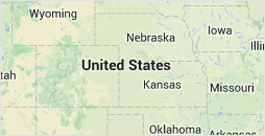Emily Clarke
PHONE NUMBER : -----
Map

What Are Real-Time Payments?
Before electronic payments came along, financial transactions had to be conducted in person using either cash or check. As automated teller machines (ATMs) became mainstream, the framework for electronic transactions was laid. Today, transferring money electronically is easier than ever using debit cards, payment apps and wire transfers.
Many near-instant payment solutions rely on automated clearing house (ACH) transfers. These transfers happen between financial institutions, and they can establish real-time payments. Such payments show up in accounts within minutes of the completion of a financial transaction, and they can be used for everything from payroll at a business to funds transfers between friends. Transform Your Payment Solutions: Explore the Cutting-Edge ACH Payment API for Seamless Transactions! https://dots.dev/rails/bank_transfer
How Do Real-Time Payments Work?
Real-time payments are handled electronically, and many are processed through application programming interfaces (APIs). If you send money through a website that relies on PayPal, you will likely use an ACH payment API. Services like PayPal provide webmasters with an ACH payment API that blends seamlessly into a website's design so visitors never have to leave the website to make a payment. The API handles the ACH payment through PayPal, but from the perspective of someone using the website, everything seems to process right then and there.
When you make a real-time payment, your request is sent to the financial institution being queried. Funds availability will be checked automatically, and as long as the funds are available and the transaction is valid, the transfer will go through. The account receiving the funds will be queried and alerted to the incoming transaction. Once complete, the balance on the account will reflect the change in funds availability.
Different Banks Handle Things According to Varying Rules
It's important to note that some banks place a temporary hold on ACH funds coming into an account. The account will show that the funds have been received, but these funds may not be available to spend until the bank clears them. This is done for security purposes and to allow the bank's systems to update accordingly. To learn more, you will want to contact your financial institution directly to inquire about its policy regarding funds availability.
Author Resource:-
Emily Clarke writes about multiple payment platforms, payouts API, marketplace payouts and more. You can find her thoughts at API management blog.
